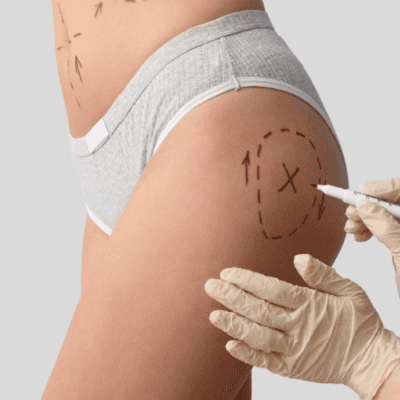What Is Buttock Augmentation? A Beginner’s Introduction
Body shape and proportions can influence how people feel about their appearance and confidence. One area that many individuals often wish to enhance is the buttocks. Buttock Augmentation has become a well-known cosmetic procedure aimed at enhancing the size, shape, and contour of the buttocks for a fuller and more balanced figure. Whether motivated by aesthetics, body balance, or self-esteem, many people consider this procedure to achieve a more defined and proportional silhouette.This beginner-friendly guide explains what buttock augmentation is, how the procedure works, the popular methods used today, expected results, recovery, and key things to consider before choosing the treatment.

Understanding Buttock Augmentation
Buttock augmentation is a cosmetic procedure designed to enhance the shape and size of the buttocks. It can improve body proportion, add volume, and create a more lifted appearance. The goal is not only to enlarge the buttocks but to shape them in a way that looks natural and complements the rest of the body.People seek buttock augmentation for various reasons:
- Naturally flat buttocks
- Loss of volume due to aging or weight loss
- Desire for more body curves and definition
- Enhancing self-confidence in clothing styles
Popular Methods of Buttock Augmentation
There are different techniques used to enhance the buttocks. Each has unique benefits depending on body shape, goals, and expectations.
1. Fat Transfer (Brazilian Butt Lift)
This technique uses fat from the patient’s own body. Fat is gently removed from areas like the abdomen, thighs, or flanks and then purified and injected into the buttocks.Benefits:
- Provides a natural feel and look
- Enhances two areas at once: slimming one region and adding volume to another
- Uses your own fat, reducing risk of allergic reaction
2. Buttock Implants
Solid silicone implants are surgically placed inside the buttock muscle to add shape and volume.Benefits:
- Suitable for individuals with low body fat who do not qualify for fat transfer
- Provides long-lasting enhancement
- Allows customization of volume and contour
3. Non-Surgical Buttock Augmentation (Fillers or Biostimulators)
This involves injections designed to gradually increase volume and firmness by stimulating collagen production.Benefits:
- Minimally invasive
- Little to no downtime
- Gradual, natural-looking results
What to Expect During the Procedure
The exact process depends on the chosen method, but general steps include:
- Consultation: Evaluation of body shape, goals, and medical history.
- Planning: Marking treatment areas and discussing expected results.
- Procedure: Performed under local or general anesthesia.
- Shaping and Sculpting: Adding volume to achieve the desired contour.
- Aftercare Guidance: Instructions provided to support healing and maintain results.
The procedure time can vary, usually ranging from 1 to 3 hours depending on technique.
Results and Expectations
Results from buttock augmentation vary depending on the method used.
- Fat Transfer: Results can appear natural and soft. Some of the transferred fat may be absorbed by the body within the first few months, so final results are usually evaluated after three to six months.
- Implants: Results are more defined and consistent, ideal for individuals seeking a noticeable size increase.
- Non-Surgical Filler Methods: Results develop gradually and may require multiple sessions for desired volume.
In all cases, realistic expectations are important. The best results enhance natural curves rather than create an unnatural appearance.
Recovery and Aftercare
Recovery time varies based on the treatment technique.
However, there are general aftercare steps to support healing:
- Avoid sitting or lying directly on the buttocks for a recommended period
- Use compression garments to reduce swelling
- Keep the treated area clean and follow post-procedure instructions
- Avoid strenuous exercise until cleared for activity
- Maintain a healthy diet and hydration to support healing
Most people return to routine activities within a few days to a couple of weeks depending on the method used.
Potential Risks and Considerations
As with any cosmetic procedure, there are risks, including temporary swelling, bruising, discomfort, or asymmetry. Individuals should discuss medical history, goals, and concerns during consultation to make an informed decision.Choosing a qualified professional with experience in body contouring is essential for achieving safe, balanced, and satisfying results.
Is Buttock Augmentation Right for You?
You may be a suitable candidate if:
- You desire fuller or more rounded buttocks
- You are in good general health
- You have realistic expectations about outcomes
- You want to improve body proportion or contour
Those who want natural enhancement may consider fat transfer, while individuals with lower body fat may be better suited for implants or non-surgical methods.
Frequently Asked Questions (FAQs)
1. How long do results from buttock augmentation last?
Fat transfer and implants can offer long-lasting results if healthy lifestyle habits are maintained. Non-surgical fillers usually need repeat sessions to maintain volume.
2. Is the procedure painful?
Discomfort is common during recovery but can be managed with proper aftercare and medication.
3. Will I be able to sit after the procedure?
It is usually advised to avoid sitting directly on the buttocks for a period, especially after fat transfer, to support proper healing.
4. How soon can I return to work?
Return to work depends on the method used. Some individuals resume work within a few days, while others may require up to two weeks.
5. Can buttock augmentation look natural?
Yes, with proper technique and realistic goal setting, results can appear very natural and proportional.
6. Do I need to repeat the procedure in the future?
Fat transfer and implants typically provide long-lasting results. Non-surgical filler treatments may require maintenance sessions.
Final Thoughts
Buttock Augmentation can help individuals enhance their body contour, restore volume, and improve confidence. With multiple techniques available—from fat transfer to implants and non-surgical options—there is flexibility to achieve a shape that aligns with personal goals. Understanding
